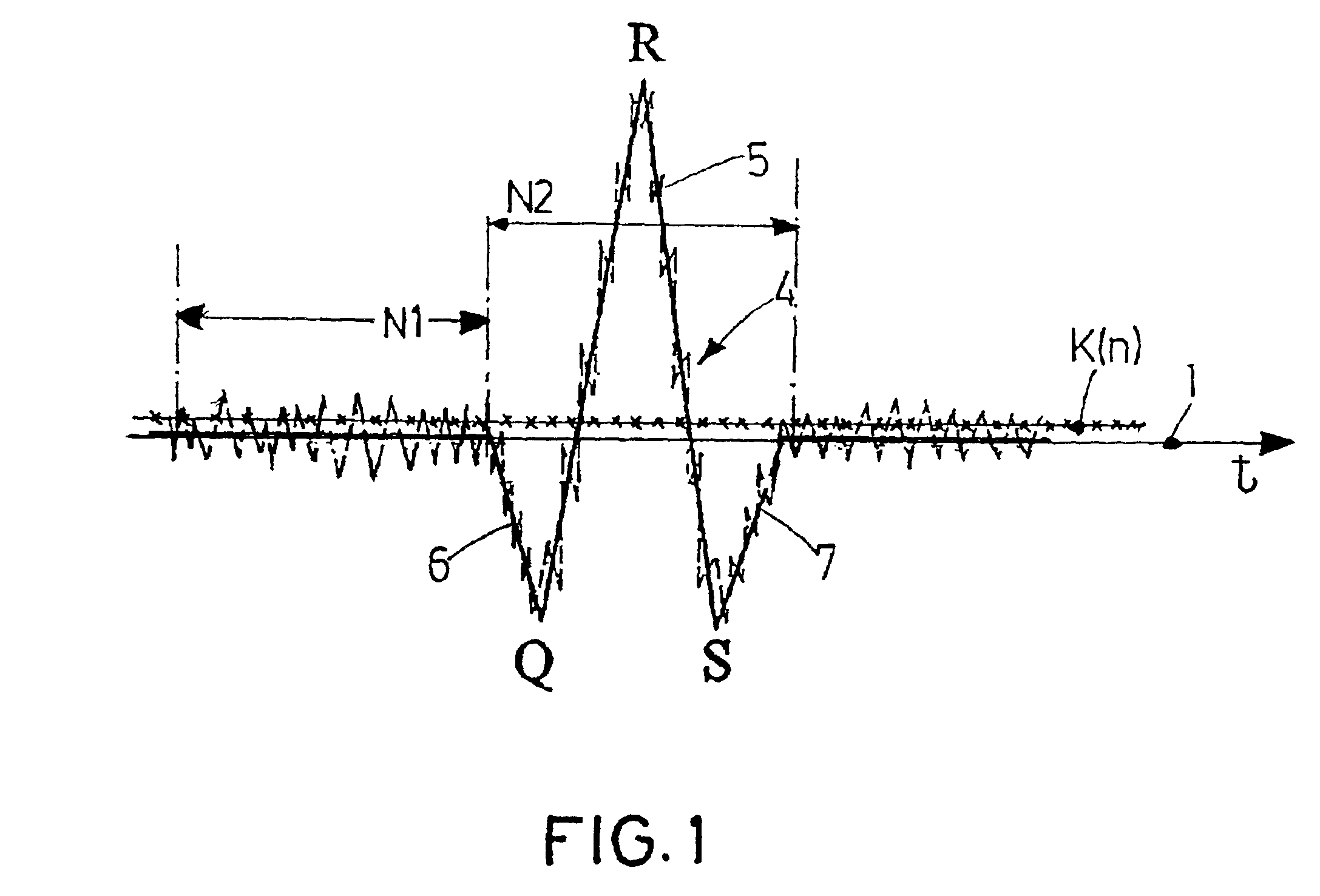Signal evaluation method for detecting QRS complexes in electrocardiogram signals
- Summary
- Abstract
- Description
- Claims
- Application Information
AI Technical Summary
Benefits of technology
Problems solved by technology
Method used
Image
Examples
Example
[0031]As seen in FIG. 1, an idealized QRS complex consists of a relatively high-amplitude oscillation about the zero line 1 that initially guides the ECG signal 4, in the Q spike 6, away from the zero line 1 in a negative direction. Afterwards the ECG signal 4 is guided, in the R spike 5, into the positive range with a steep rise and with a subsequent steep drop back into the negative range while forming the S spike 7.
[0032]In reality, the ECG signal 4 is accompanied by a certain level of noisiness, as indicated in FIG. 1 by the dashed signal curve. If this noisy signal is sampled and converted into discrete signal values of chorological order and band-pass filtered, these signal values can be compared to the threshold function K(n) that is diagrammatically illustrated in FIG. 1 as a crisscrossed line. As can be derived clearly and by way of model from FIG. 1, the value of the ECG signal in the range outside the QRS complex mostly falls short of this threshold function K(n). In the ...
PUM
 Login to View More
Login to View More Abstract
- sampling of the ECG signal (4) and conversion into discrete signal values (x(n)) in chronological order;
- comparing the signal values (xf(n), xfq(n)) to a threshold function (K(n)) adaptively determined therefrom;
- determining a frequency number (D(n)) within a defined segment of the consecutive signal values, by which signal values (xf(n), xfq(n)) preferably fall short of the threshold function (K(n));
- comparing the determined frequency number (D(n)) to a defined threshold (Θ), wherein an undershoot of the threshold (Θ) is significant for apresence of a QRS complex (5, 6, 7) in the defined segment of the ECG signal (4).
Description
Claims
Application Information
 Login to View More
Login to View More - R&D
- Intellectual Property
- Life Sciences
- Materials
- Tech Scout
- Unparalleled Data Quality
- Higher Quality Content
- 60% Fewer Hallucinations
Browse by: Latest US Patents, China's latest patents, Technical Efficacy Thesaurus, Application Domain, Technology Topic, Popular Technical Reports.
© 2025 PatSnap. All rights reserved.Legal|Privacy policy|Modern Slavery Act Transparency Statement|Sitemap|About US| Contact US: help@patsnap.com



